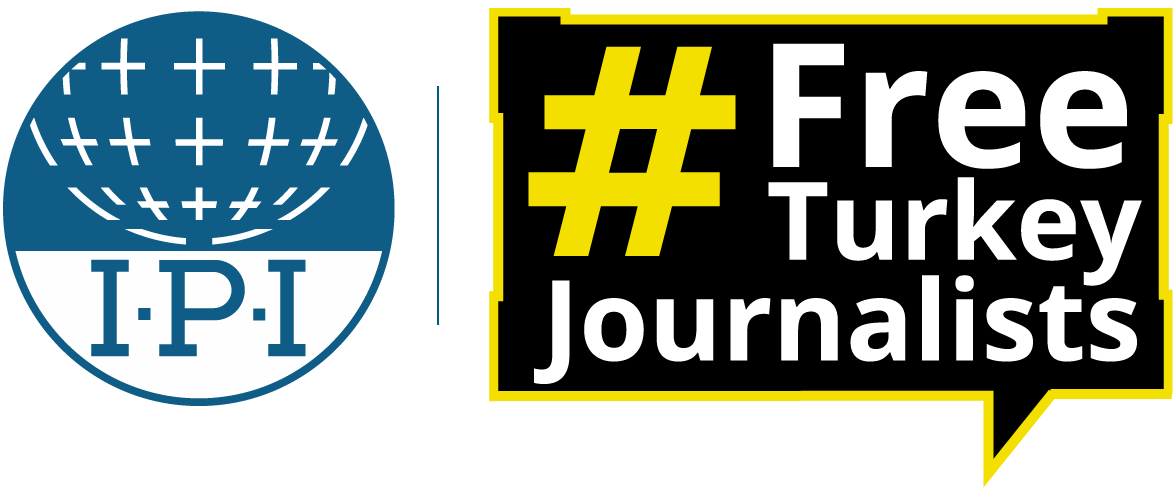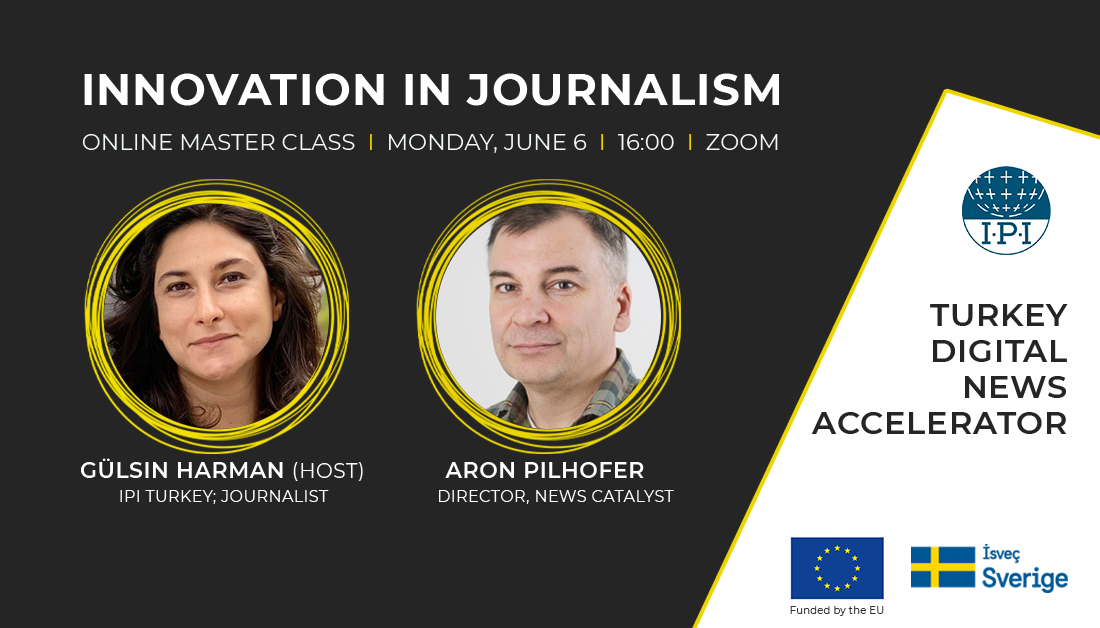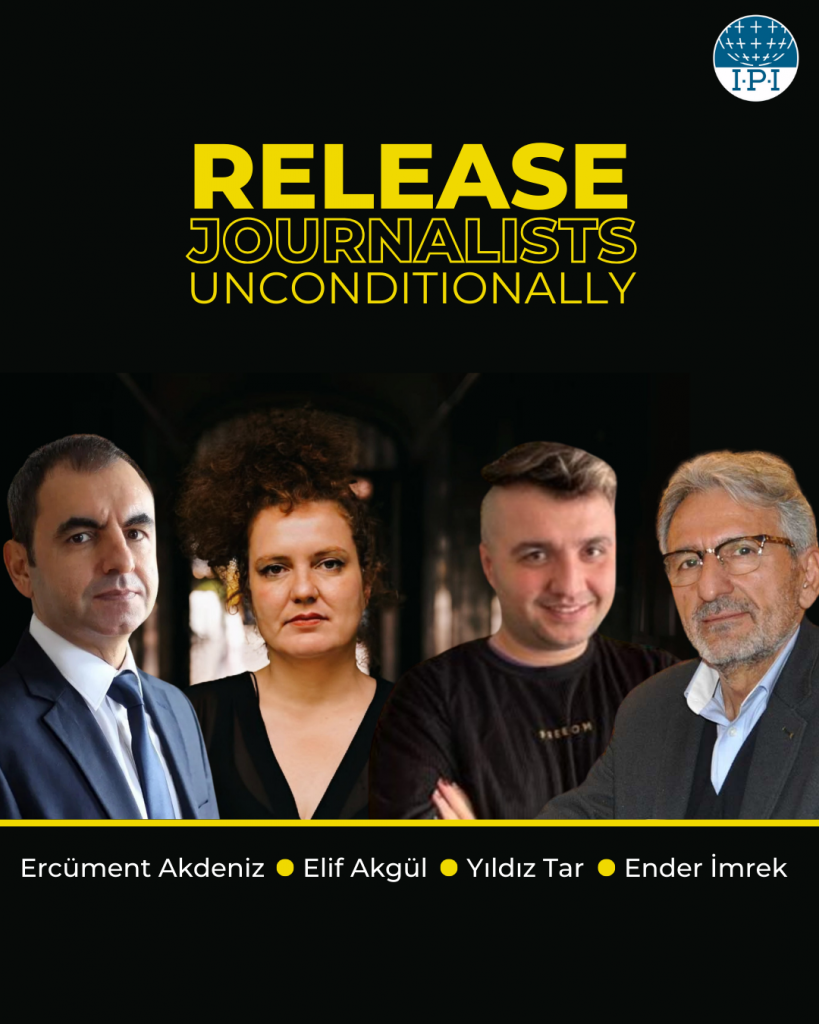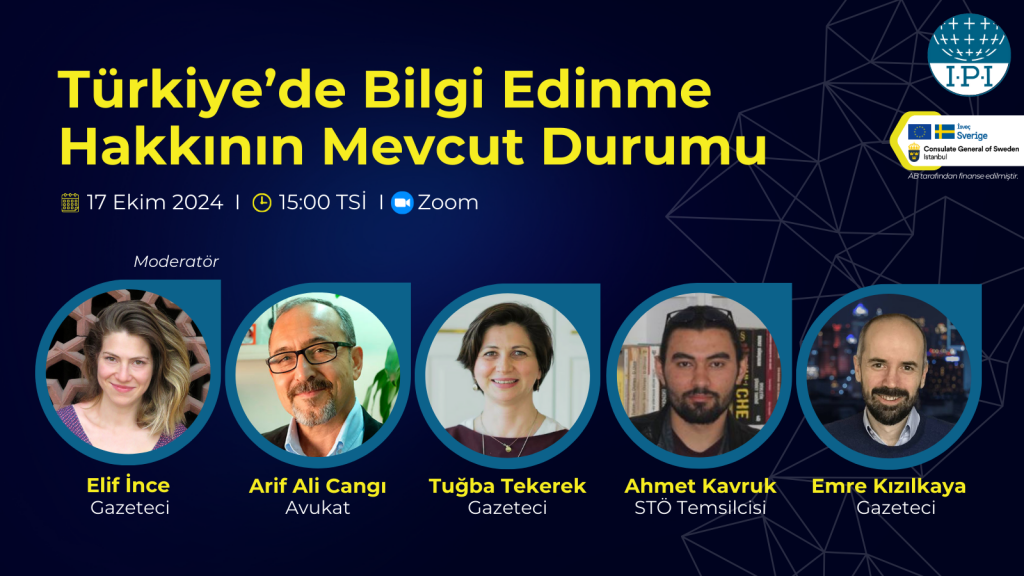On June 6, International Press Institute (IPI) in collaboration with its Turkey National Committee launched the Master Class series “Turkey Digital News Accelerator 2022” to bring international experts via online and hybrid workshops on digital transition and innovations to journalists in Turkey.
Gülsin Harman, a member of IPI Turkey National Committee and an experienced journalist working for international news outlets, hosted Aron Pilhofer of News Catalyst who presented ideas about product thinking for small newsrooms and how to engage audiences through innovation, drawing on cutting-edge examples from US journalism in the first Master Class in the series under the title of “Innovation in Journalism”.
Harman opened the Master Class, introducing herself and Pilhofer’s career in journalism. She stressed that she never imagined telling audiences that the mediums that we choose as journalists affect the way audiences engage with the news themselves. Embracing the idea of being a good journalist on these three principles: “You report well, write well, edit well”, she said that she was introduced to product thinking in journalism during her Nieman Fellowship at Harvard University in 2020 and since then she has been “obsessed” with the idea of how we should choose the mediums and how we can use the research to help better engage our audiences. She then received a grant from the European Journalism Center to develop a newsletter for senior citizens of Turkey who experienced the harshest lockdown conditions during the pandemic as an example of product thinking.
Later on, Harman handed over to Aron Pilhofer who is the James B. Steele Chair in Journalism Innovation at Temple University for his presentation. In addition to teaching, he emphasized that his work is focused on new business models, digital transformation, and innovation in news. Before joining Temple, Pilhofer was the executive editor, digital, and interim chief digital officer at the Guardian in London where Harman and he had the chance to work together.
Nowadays, helping journalists throughout the US and internationally to better build products for journalism and expand their revenue resources, Pilhofer said that he had also never heard about product thinking until he experienced it at a seminar, where he thought it was “a lot of extra process, … buzzwords, and nonsense”.
“As journalists, we live in this world between cynicism and skepticism, and we hear these kinds of innovations, and we tend to almost reflexively push them away”, Pilhofer said.
He started his presentation by introducing the term “innovation theater” which he underlined the fact that journalists are obsessed with the term innovation and talk about various terms, like crowdsourcing, virtual reality, newsletters, sensor journalism, drone journalism, data vis, and more, non-stop as if they’re all going to save journalism. He asked: “Where does all this nonsense end?”
“This is where we need to get past talking about innovation and start actually participating. Innovation is the continuation of an invention. Innovation is not an explosion, it’s incremental.”
Pilhofer argued that there is a problem in how we reach innovation. He said that journalists are looking for the “bright and shiny” and therefore creating unsustainable initiatives, some examples being the Spanish New York Times, Snow Fall, or Reuters’s virtual news bureau in Second Life. Yet, he stressed that innovation must be part of a greater strategy and not individual flashes.
He elaborated on product thinking which he defined as a framework for problem-solving. A way of identifying problems, brainstorming, and then trying to solve these problems. Finally, it’s a method of testing to see if you’ve actually solved those problems or not and then repeating that and doing it very quickly.
He then talked about design thinking which is user-centered and should start from the perspective of the user and not of the organization or the individual solving the problems. “You’re getting real feedback from real users very quickly from exactly the people you’re trying to reach. It involves quick cycles and long arcs unlike more traditional approaches to building products and solving problems that we’re all used to.”
Pilhofer underlined that journalists need to move past the linguistics of product thinking. Product thinking may sound like a marketing strategy, but it is only prioritizing the consumer of the news to better address the problems users and readers are facing. The approach is aligned with journalists’ pure goals and the public sphere.
Instead of very long cycles, product thinking or design thinking is done in a series of very short very rapid sprints that in aggregate add up to the product but are individually tiny, according to Pilhofer. He gave examples of the Kensington Voice, and how they created a community-centered newspaper at the peak of the opioid crisis where Kensington was ground zero. Journalists would come around the world and do superficial reporting that reduced the city to its crisis, and the Voice opened up the discussion of news in Kensington to all residents. In a town where access to the internet was limited but citizens were willing to participate, the Voice made printing innovative.
Following a few more examples such as the Bristol Cable, the Oaklandside, the Salt Lake Tribune, and more, the master class moved on to the audience and moderator questions. The first question focused on the masterclass audience, small, independent Turkish media, and their journey with innovation.
In response to the question of whether it makes sense to start with niche topics instead of launching a full-on news platform, especially in the context of innovation journalism which then could help build the kind of problem-solving audience engagement wanted to be built, Pilhofer said that it does, however, it doesn’t have to be. He added: “I wouldn’t start with a solution to a problem, but I would find a problem people care about, and then think about its solution. But there have also been very successful niche topic publications that have launched successfully”.
He completed his presentation by putting an emphasis on the importance of starting from the problem, or the users, and what they want. Instead of asking, “how do we support this”, or “how do we pay for this”, it’s important to ask the question “what problem is this solving, and will our solution create users interested in paying for this”?
There is more to come!
This special master class is part of “Turkey Digital News Accelerator 2022”, a series of online and hybrid workshops on digital transition and innovations for journalists in Turkey which will continue throughout the year with different topics and international experts.
Please sign up for our newsletter to get information about upcoming events!



